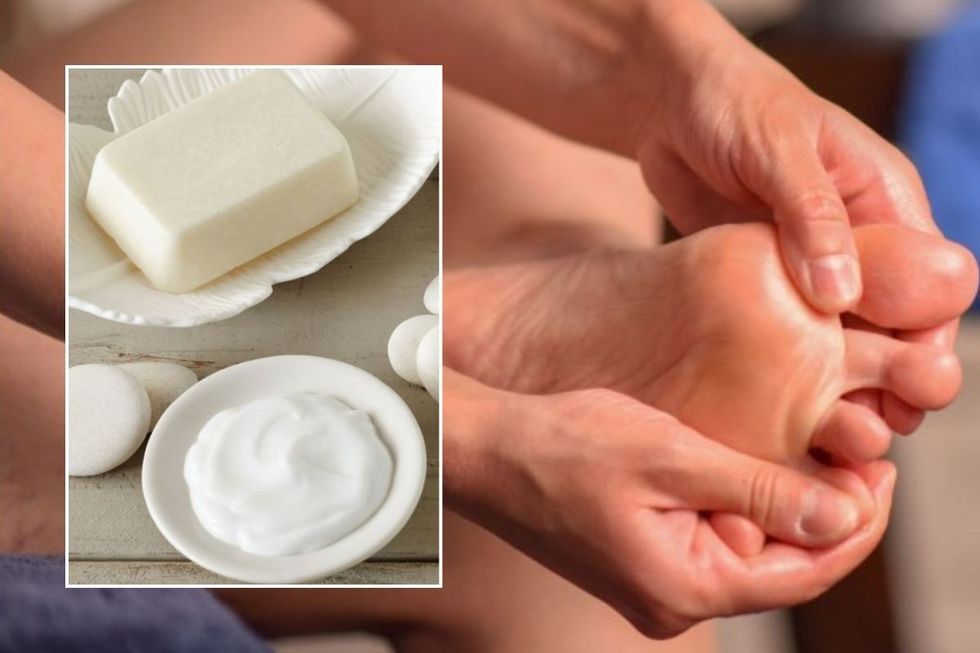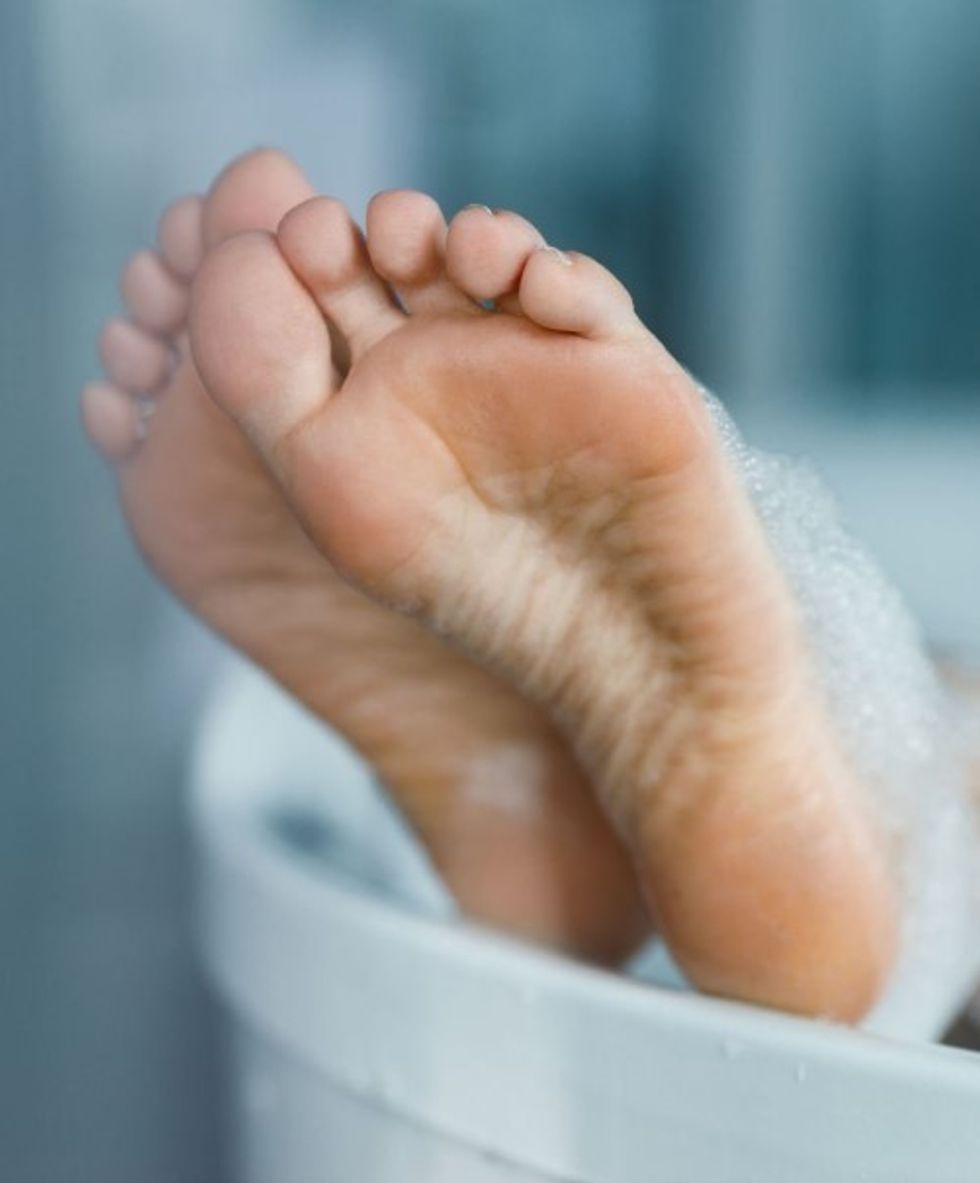A specialised care routine can transform the soles of your feet
GETTY
GB News is consulting top skin experts for their best foot care recommendations
Don't Miss
Most Read
Trending on GB News
As winter sets in, our feet often bear the brunt of harsh weather and neglect, particularly with fewer pedicures on the agenda.
This makes the colder months the perfect time to give the feet some much-needed attention at home.
With all types of skin care, the results of extensive foot care aren't immediate, but over time it can pave the way to smoother soles.
Board-certified dermatologist at Sonterra Dermatology, Dr Anabelle Garcia, has shared her best at-home remedies for baby-soft feet.

A specialised care routine can transform the soles of your feet
GETTY
Does menopause affect feet?
As women enter menopause, their feet undergo significant changes that can affect comfort and overall foot health.
Often, these signs are overlooked, despite having a substantial impact on daily life.
Dr Garcia shared: "Many aspects of your foot may change as you age. As your ligament and tendons lose their strength, you might lose the arch in your foot, causing a flat foot and larger shoe size.
"Ageing leads to collagen, elastin and natural oil loss, which causes sagging and wrinkles on the tops of your feet and dry, rough skin.
"The skin also becomes thinner and more susceptible to fungal infections or injury, which can affect the appearance of feet."
Additional challenges like weight distribution changes during menopause can result in discomfort and dryness in the heel area.
"Due to hormonal changes and decreased levels of oestrogen, you may experience reduced elasticity, which could lead to cracked heels," shared Dr Garcia.
"The weight distribution in your body also shifts during menopause, so one can expect fat pad atrophy, or the thinning of the fat pad on the heel of your foot, not only causing drier feet, but pain as well."
Fortunately, the expert confirmed "it is possible to achieve baby-soft under feet after menopause although it will require consistent care".
Exfoliation:
Proper foot care is essential for maintaining healthy and comfortable feet.
An effective technique that often goes overlooked is scrubbing, which can breathe new life into dry and dull skin.
"Exfoliating the feet once a week using a pumice stone or foot scrubber will help to remove dead skin, which can be done after a shower or soaking your feet," said Dr Garcia.
Moisturising:
The regular use of hydrating foot creams can provide instant benefits to the feet and help keep them in top condition over time.
Specialised creams typically combine hydrating ingredients with mild exfoliants for optimal care. Dr Garcia lists six ingredients to look out for when choosing products.
"One step that most people skin is moisturising your feet twice a day," she explained.
"There are many great options; however, look for those that have hydrating and moisturising ingredients such as urea, glycerin, shea butter, hyaluronic acid and exfoliating ingredients such as salicylic acid or lactic acid."
Showering:
Long, warm showers are a joy, but they can aggravate skin conditions that cause dry, cracked skin on the feet."Be sure to refrain from showering too frequently or for long periods of time as this can worsen dry feet," advised Dr Garcia. "Keep showers to about 10 minutes."
The expert went on: "You can soak your feet in warm water and Epsom salt for 15-20 minutes to soften the skin, then use a foot scrubber to gently exfoliate dead skin.
"However, be sure not to use tools that are too abrasive, especially on itchy or sensitive skin, as this can worsen your condition.
"Afterwards, you can moisturise with aloe vera, shea butter or petroleum jelly and put socks on right after to lock in the moisture."
How long does it take to restore feet?
Patience is key when trying to achieve salon-soft feet, but those who adhere to a consistent regiment will reap the rewards, stresses Dr Garcia.
"It could take up to two months to see your feet return to their original softness if you're consistently practising your treatment," the expert shared.
"Within a couple of weeks, you should see an improvement. However, if you notice that your skin issues aren't improving, it's best to see a dermatologist."
LATEST DEVELOPMENTS

Moisturising the feet regularly is key for optimal softness
GETTY
Best types of shoes for soft feet:
According to Dr Garcia, foot care goes beyond the products we apply to the extremities, as it stretches to footwear as well.
"Shoes that aren't too tight but fit well are best for preventing thick and dry heels," the expert noted.
"It's also best to choose shoes that have some extra cushioning to absorb shock and provide support.
"Avoid shoes that leave your heel exposed, and for extra care, wear socks or slippers at home to protect your feet."
Coupled with a specialised foot care routine, these habits can transform dry and rough feet into smooth and healthy soles.








